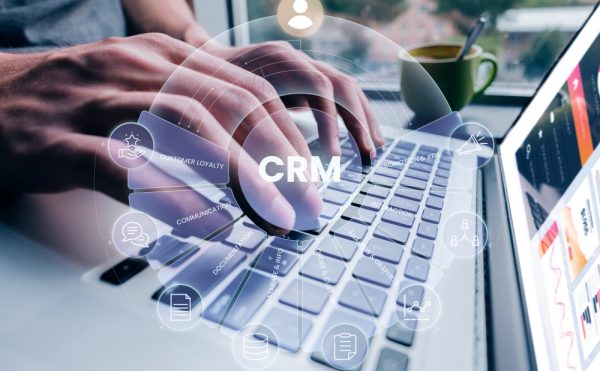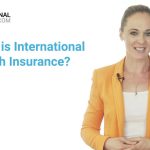Learning how are hazards identified during mission planning CRM is necessary to make the management process give the desired outputs. By understanding this step, you can make a wise decision and adjustment to create a good environment and reach the target.
How are Hazards Identified during Mission Planning CRM?
The METT-TC framework serves as a comprehensive tool for hazard identification in CRM. It systematically assesses potential risks from mission planning, enemy forces, the terrain, prevailing weather conditions, troop capabilities, equipment, time, and relevant civil considerations.
The next question is how are hazards identified during mission planning CRM? The best answer is overviewing the existence of the following condition. If there is a high potential risk, this plan will be applied in order to identify the hazard.
The high-potential risks identified and managed include energy deficiencies, equipment status, and environmental conditions. Therefore, there is a need for solutions for CRM mission planning, such as hazard identification.
However, identifying the hazard begins with a workplace inspection. You should walk around the workplace and observe the environment, including tasks, workers, and work areas.
This process needs activities, processes, and substances that harm the planning. This includes the work environment, equipment, materials, substance, work task and, work design. There should be an awareness of any possible high-potential risk. Moreover, this job can be done in a team, so there will be no hazards.
For equipment, there should be a manufacturer check to prevent the hazards. This should be considered doing a routine operation to maintain safety. The awareness of things that cause high-potential risk of hazard is essential in mission planning.
What is Composite Risk Management (CRM)?
Composite Risk Management (CRM) is a structured method to enable organizations to actively identify, evaluate, and prioritize risks. Those things are leading to decisions to optimize opportunities and minimize negative outcomes.
This type of risk management originated from the United States Army. Now. CRM has been adopted across various industries as a best practice in risk management.
This approach offers a comprehensive framework for businesses to effectively handle risks, aligning with mission goals, resource efficiency, and whole business purposes.
5 Steps of Composite Risk Management (CRM)
CRM needs multiple actions to accomplish management risk successfully. Although CRM identifies potential threats, it doesn’t predict actual outcomes. Therefore, it assists in reducing high-potential risk. Also, this method guides the process of identifying hazards in CRM mission planning, leading to proficient risk prevention.
1. How are Hazards Identified during Mission Planning CRM: Identifying the Hazards
As stated before, identifying the hazard is one of the prominent steps in CRM. In this step, you should identify the potential hazard to prevent any inconvenience in the mission.
This step requires your experience, consideration of environmental elements, knowledge of past problems, and other insight to find the potential hazards.
Hazards vary from tangible threats, like on-site accidents, to financial ones, like market fluctuations. Recognizing these hazards allows organizations to grasp the risks that might harm them fully.
2. Assess the Risk
After identifying the hazards, the next step is to assess the risk aligned with each hazard. It’s important to evaluate each potential hazard to understand their possible impact. In this step, you can address the most harmful ones and ensure that all hazards are managed sensibly.
By doing this, you can decide where to put your working team’s attention and use their resources to handle the biggest risks. This part also determines how much risk the organization can afford.
3. Develop Controls and Countermeasures
After assessing the risks, you should come up with planning and strategies to lessen or get rid of those identified risks. Once measures are set up, you can review all the actions that should be taken until they’re determined to reduce or completely gone.
This means you should have a main plan and increase security or have backup plans ready. The goal is to cut down the chance and negative impact of risks on the organization’s flow.
4. Implement Risk Controls
Implementing risk controls means using the established measures and strategies. It’s important to have clear communication, proper training, and routine checks to make sure everyone involved gets and follows these controls.
It’s also important to regularly review and evaluate how well these controls work and see if any areas need to be solved or become any possible risk for the future.
5. Supervise and Evaluate
During the earlier step, you must ensure that the crucial controls and standards that are necessary to be supervised are under control. In addition, it’s essential to evaluate how well these controls work to determine if they’re achieving the desired outcomes.
In CRM, supervising and evaluating the risk controls is essential to ensure how well risk controls are working. This step includes monitoring controls on site, getting feedback from all involved parties, and doing regular checks to assess the performance.
By supervising and evaluating all the processes, organizations can identify future risks, adjust their planning and strategies, and improve the risk management process to give the best outcome.
6. Make Decisions and Adjustments
From the feedback and evaluation, you make the decision and adjustment to the risk management strategies. This includes looking at the data collection, identifying patterns, and changing the controls and strategies.
By making the decision adjustments, organizations can keep their risk management relevant and effective when there are still endless environmental changes. Implementing CRM that has been proven to be effective will give many benefits to the organization and the people behind it.
Now, You Know How are Hazards Identified during Mission Planning CRM!
How are hazards identified during mission planning CRM is the most pivotal step in this type of risk management for business. It brings many insights into how the management risk will behave in the future to prevent any negative impact on the organization.
Understanding the hazard earlier helps you to decide and adjust the management risk so the impact will not harm the whole organization process.
Bagikan










